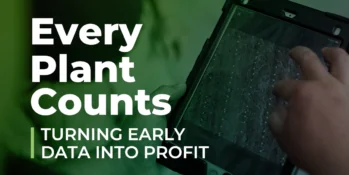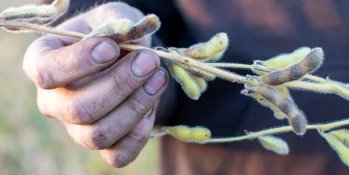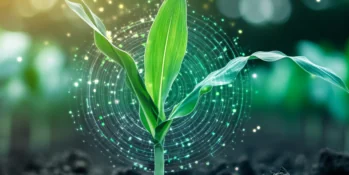

 In the early summer of 2021, Landus signed up the first 200 acres that would benefit from Taranis AcreForward insights. By the end of the growing season, the stand count, disease and insect identification, and other insights had made that customer a Taranis believer. Landus launched #Grow23 with more than 50,000 acres enrolled with Taranis.
In the early summer of 2021, Landus signed up the first 200 acres that would benefit from Taranis AcreForward insights. By the end of the growing season, the stand count, disease and insect identification, and other insights had made that customer a Taranis believer. Landus launched #Grow23 with more than 50,000 acres enrolled with Taranis.
Numbers don’t lie. Neither do pictures.
Landus Cooperative customers throughout Iowa, Missouri, Illinois, Nebraska, and Minnesota are seeing firsthand that every acre tells a story, and learning how powerful knowing what the story is before it’s completely written can be for their management opportunities.
“We took everything we learned from those 200 acres that first year and demonstrated some of the insights that could be found with the various drone flights. We were looking at every plant that had emerged 10 days after planting,” says Landus Technical Agronomist, Dan Bjorklund. “By the time we went from the growing season and into the winter months, there was pretty much complete buy-in, not only from our Landus team but from the farmers they were working with.”
Being able to see exactly what was happening on every acre and target issues that were already top of mind—knowing the specifics—made the difference for both the Landus account managers and the growers they were working with, Bjorklund says.
“We had specific agronomic situations, like tar spot, that was not only easy to identify using Taranis but was also on the mind of growers across the Corn Belt. Farmers are always worried in the busyness of planting that crops aren’t emerging uniformly, and without uniformity, we can’t ever hit full yield potential,” he says. “There’s no way to put their minds at ease without using a technology like Taranis where we can almost instantaneously know the number of plants that have emerged and where replant needs to occur.”
At current prices, Bjorklund says that the cost passed to the grower is the equivalent of two bushels of corn or one bushel of soybeans—a cost that he witnessed growers see ROI more than 30% above.
“We had examples this year where, because the conditions were tougher after planting in April, the first flight showed that we were way under population. I know specifically two soybean field situations where we wanted a 120,000 population, and what Taranis showed us was 50,000. Those farmers had a chance to replant those acres. That’s significant ROI,” he says.

Establishing a strong stand is one of the first—and most critical—indicators of yield potential. But getting a true picture of stand establishment in the narrow window after emergence can be difficult, time-consuming and imprecise. That’s where Taranis Intelligence comes in.

As spring approaches and planting plans solidify, a quiet shift is happening across the Corn Belt. In coffee shop conversations and agronomist calls, soybeans are gaining attention — not as a backup plan, but as a serious strategic move.

Artificial Intelligence (AI) isn’t just a buzzword—it’s transforming agriculture from the ground up. Whether you're a grower, agronomist, or ag retail leader, understanding how to leverage AI can be the key to driving better decisions, improving efficiencies, and maximizing profitability.